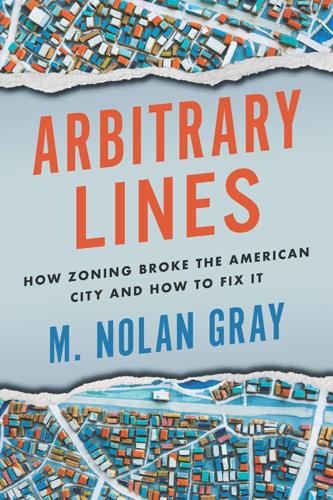
Arbitrary Lines: How Zoning Broke the American City and How to Fix It
by
M. Nolan Gray
Published 20 Jun 2022
A classic example of this is a site with an extreme grade change: if, let’s say, your one-hundred-foot-deep lot is bisected by a large cliff, abiding by the typical thirty-foot front setback might make development of the lot impossible. In this case, a zoning board of appeals may grant you a variance to bypass the front setback rules.14 In theory, variances were supposed to be used only for outlier cases. In practice, given how restrictive zoning has become, many major cities process hundreds of variance applications per year.15 The second mechanism, a special permit, allows a specific development to depart from the standard zoning, subject to strict conditions. Unlike variances, which almost exclusively apply to envelope issues, special permits can modify both the use and density rules to which a site is subject.
…
New York City, for example, built fewer new units in the recovery boom of the 2010s than it did in the Great Depression of the 1930s.8 In the smaller suburbs that dot regions like the great bays of California and Massachusetts, zoning has emerged as an effective tool for blocking any and all development, locking many communities in amber. As a result, many coastal housing markets now operate in a context of permanent housing crisis. Relatively little housing is built, and where it is built at all, the housing is kept prohibitively expensive by unnecessary mandates and a costly permitting process.9 With restrictive zoning already on the books in those cities that remain somewhat affordable—usually thanks to an increasingly scarce supply of undeveloped land—the housing affordability crisis is unlikely to remain an exclusively coastal phenomenon for long. What happens when cities like Austin and Denver—both already posting some of the highest housing price appreciation in the country—run out of developable land within an hour’s drive of downtown?
…
The median home price in San Jose is four times as expensive as in Orlando.20 The sad reality is that, in San Jose, all of those additional earnings would be erased by astronomical rents or a steep mortgage. The decision to move to Orlando is obvious when you factor in San Jose’s housing shortage. While Americans used to move to prosperity, restrictive zoning perversely provides Americans with clear incentives to avoid those places where they could make the largest contributions to the economy.21 This has serious implications for the health of the US economy. As we discussed above, large and growing cities make us more productive, which is why they have historically been the setting for sustained economic growth.22 By pricing Americans out of the largest labor markets, we prevent them from specializing, absorbing the wisdom of knowledge spillovers, or potentially starting new and innovative businesses.
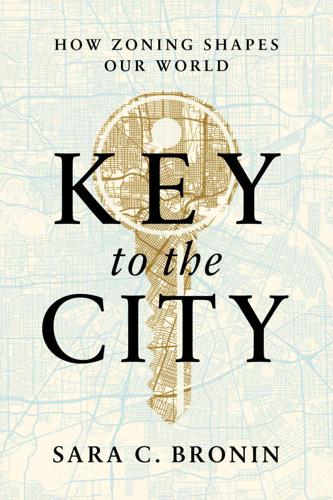
Key to the City: How Zoning Shapes Our World
by
Sara C. Bronin
Published 30 Sep 2024
Policymakers haven’t quite caught up to the fact that this type of manufacturing differs from the larger-scale industrial manufacturing that partly prompted zoning in the first place, a century and more ago. Consider the example of craft brewers. Small-scale artisanal beermaking has exploded in the United States, now numbering more than 10,000 brewers nationwide. They are emblematic of the smaller enterprises that can run up against restrictive zoning rules. Although these businesses do not operate like such industrial megabrewers as Budweiser or Coors, zoning often treats them the same, lumping all manufacturers into the all-encompassing “industrial” category. It is a longstanding mainstay of zoning that industrial uses must generally be located far from the action, along the unattractive edges of towns.
…
According to the New York Times, Houston is doing “more than twice as well as the rest of the country at reducing homelessness.” The supply of housing also has an impact on prices. When I visit my parents, I’ve stopped being surprised at the new townhouses and small-scale residential infill within the Loop. West U, meanwhile, has maintained its restrictive zoning, including minimum lot-size requirements of 8,250 square feet—far smaller than Connecticut’s football field but almost six times as large as Houston’s. This minimum drives up the cost of housing and simultaneously limits the number of homes that can be built within city borders, especially since all of West U has been developed already, and the only way to increase the amount of housing would be to subdivide existing lots into smaller ones.
…
It also constrains the size, height, and width of homes, mandates strict setbacks, and requires parking spaces for each home. As a result of this combination of restrictions, the number of housing units in West U has stagnated, barely increasing in the past half-century. This is consistent with economists’ finding that restrictive zoning and other land use constraints dampen production. And because people want to live in new homes in West U but lack land on which to build, the neighborhood has seen the demolition of perfectly usable historic homes, as property owners like my parents replace smaller bungalows with larger, custom-built single-family homes.

Stuck: How the Privileged and the Propertied Broke the Engine of American Opportunity
by
Yoni Appelbaum
Published 17 Feb 2025
In the suburbs, though, he found it harder to form face-to-face relationships with customers. Instead of walking over on their way to or from work, they drove, or asked to have their clothes delivered. His grandfather had lived above his store in the Village; he and his father had lived near their store in Jackson Heights. But the new spatial geography of American life, defined by restrictive zoning, had separated these aspects of his life. David still lived in Queens, and the commutes were grinding. He suffered a heart attack and got out of the business. * * * On a summer evening, as I walk down Hudson Street, I see a gray-haired woman juggling three bags and her dry cleaning as she tries to open a door.
…
Both times, the city’s Civic Art Commission instead recommended a more restrictive residential zoning classification. Single-family zoning didn’t create America’s housing problems by itself, and simply rolling it back cannot fix them. The supply of housing in Berkeley now lags far behind demand, as rising prices force out residents and homelessness surges. Cheney had assured Californians that restrictive zoning could create garden cities filled with affordable homes for ordinary workers. In fact, it created garden cities and then priced workers right out of them. The Elmwood Park home where he once lived is now worth roughly $2.8 million. In 2016, its owner listed a one-bedroom rental inside the house for $4,290 a month.
…
But they also wanted to change the tax structure to make development unprofitable, add new layers of community review and approval, and bar the state from upzoning—making zoning less restrictive to allow more development—open land. Plans passed by each community could target objectionable uses of the land and then phase them out over fixed periods of time. If growth was the problem, then local sovereignty was the solution. The Raiders had spent enough time studying California to appreciate how much damage restrictive zoning was already inflicting on the state. The report traced concentrated poverty and racial segregation to the “snob zoning” of wealthy communities. “Land policies play perhaps the major role in the various kinds of discrimination which inhibit fluid movement in our society and belie the Horatio Alger myth,” it declared.

Distrust That Particular Flavor
by
William Gibson
Published 3 Jan 2012
A different sort of green wave will appear if a building’s fire sensor calls for help: Emergency vehicles are automatically green-lighted through to the source of the alarm. The physical operation of the city’s port, constant and quite unthinkably complex, is managed by another system. A “smart-card” system is planned to manage billings for cars entering the Restricted Zone. (The Restricted Zone is that part of central Singapore which costs you something to enter with a private vehicle. Though I suspect that if, say, Portland were to try this, the signs would announce the “Clean Air Zone,” or something similar.) They’re good at this stuff. Really good. But now they propose to become something else as well: a coherent city of information, its architecture planned from the ground up.

The Rent Is Too Damn High: What to Do About It, and Why It Matters More Than You Think
by
Matthew Yglesias
Published 6 Mar 2012
For the most impoverished, that often means putting up with squalid conditions in urban slums beset by high crime, bad schools, and generally substandard public services. For the middle class, and for most office and retail buildings, it simply means going someplace else. This phenomenon is the much-discussed urban sprawl. In Los Angeles, land near the coast or convenient to major employment centers is more expensive than land further inland. But restrictive zoning policies make it difficult for these desirable areas to house all of Southern California’s huge, growing population. Consequently, while the city of Los Angeles saw its population grow by just 2.6 percent between the 2000 and 2010 censuses, the surrounding L.A. County grew 3.1 percent, and adjacent but further inland San Bernardino and Riverside Counties grew 19.1 percent and 41.7 percent, respectively.

The New Urban Crisis: How Our Cities Are Increasing Inequality, Deepening Segregation, and Failing the Middle Class?and What We Can Do About It
by
Richard Florida
Published 9 May 2016
But just as our understanding of the New Urban Crisis has been partial and incomplete, the strategies and solutions that have been proposed for it have been too limited and ad hoc to cope with the depth and scope of its challenges. It is true, as many have said, that we have to overcome the backward-looking NIMBY impulses, or what I prefer to call the New Urban Luddism, that hold back the urban density and clustering that innovation and economic progress require. Of course, it’s time to reform the overly restrictive zoning and building codes that limit density. And there can be no doubt that cities and their mayors need more power to run their cities. But as necessary as these things are, even if we do all of them, they will still be insufficient. To address the full sweep of the New Urban Crisis, we will have to do much, much more.
…
As we have seen, the crux of the problem here revolves around the urban land nexus: land is scarce precisely where it is needed the most. We can’t make more land, but we can develop the land we have more intensively and efficiently. A growing chorus of so-called market urbanists argues that the best way to do this is by eliminating the restrictive zoning and building codes that limit the market’s ability to build as needed. They make an important point: zoning and building codes do need to be liberalized and modernized. We can no longer allow NIMBYs and New Urban Luddites to stand in the way of the dense, clustered development our cities and our economy need.
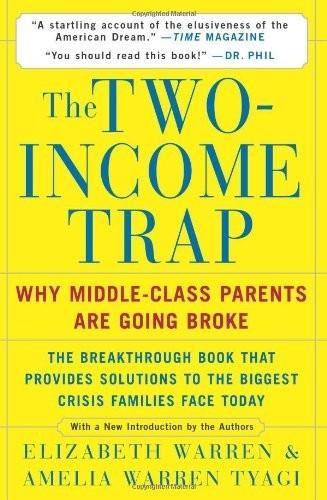
The Two-Income Trap: Why Middle-Class Parents Are Going Broke
by
Elizabeth Warren
and
Amelia Warren Tyagi
Published 17 Aug 2004
According to one study, the incidence of serious violent crime—such as robbery, rape, or attack with a weapon—is more than three times higher in schools characterized by high poverty levels than those with predominantly middle- and upper-income children.41 Similarly, urban children are more than twice as likely as suburban children to fear being attacked on the way to or from school.42 The data expose a harsh reality: Parents who can get their kids into a more economically segregated neighborhood really improve the odds that their sons and daughters will make it through school safely. Newer, more isolated suburbs with restrictive zoning also promise a refuge from the random crimes that tarnish urban living.43 It may seem odd that families would devote so much attention to personal safety—or the lack thereof—when the crime rate in the United States has fallen sharply over the past decade.44 But national statistics mask differences among communities, and disparities have grown over time.
…
Department of Education, National Center for Education Statistics, February 2002), Table 150, Percent of Public Schools Reporting Crime Incidents and the Seriousness of Crime Incidents Reported, by School Characteristics, 1996-1997. 42 U.S. Department of Justice, Bureau of Justice Statistics, Sourcebook of Criminal Justice, 2000, NCJ 190251 (December 2001), Table 2.0001, Students Age 12 to 18 Reporting Fear of School-Related Victimization. 43 For a discussion of the financial effects of restrictive zoning, see Michael Schill, “Regulatory Barriers to Housing Development in the United States,” in Land Law in Comparative Perspective, edited by Maria Elena Sanchez Jordan and Antonio Gambara (The Hague: Kluwer Law International, 2002), pp. 101-120. 44 “Violent Crime Fell 9% in ’01, Victim Survey Shows,” New York Times, September 9, 2002; the article cites a 50 percent decline in violent crime since 1993. 45 U.S.
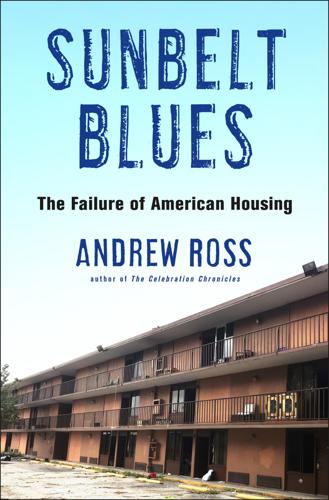
Sunbelt Blues: The Failure of American Housing
by
Andrew Ross
Published 25 Oct 2021
Between 2010 and 2019, the number of renters in the country grew twice as fast as the homeowner population.18 Renters now make up the majority of residents in most large American cities; in Orlando, just north of Osceola, two-thirds of residents are renters.19 Meanwhile, the overall cost of housing, but especially rents, is eating up an ever-larger share of most household budgets, rising much faster than incomes.20 A 2020 study showed that almost half of US renters were cost burdened, officially defined as spending more than 30 percent of their pretax income on housing, while almost a quarter were spending more than 50 percent. The worst hit were minority renters: 55 percent of Black and 53 percent of Hispanic renter households were cost burdened, compared to 45 percent of Asian and 43 percent of white households.21 New private housing supply (constrained by restrictive zoning, anti-density NIMBYists, and developers reluctant to diversify beyond their standard product of single-family homes) could not meet the needs of lower- and middle-income households, not even in the Sunbelt boomburgs.22 By the end of the decade, the inability to find housing at tolerable prices was a full-blown national condition, affecting every region and location.
…
Advocates argue that more deregulation would allow developers to increase and diversify production, especially in jurisdictions where zoning prohibits multifamily units or disincentivizes other types of affordable housing.17 Faced with a giant bottleneck in supply, Portland and California (which faces a housing shortage of 3.5 million homes) have moved to eliminate restrictive zoning in order to encourage more varied housing types, including accessory dwelling units, garage apartments, backyard cottages, granny flats, and tiny houses. In 2019, Virginia lifted a ban on duplexes, while Maryland introduced legislation to facilitate upzoning—changing building codes to allow developers to build taller and denser—and to create a significant number of social housing units.
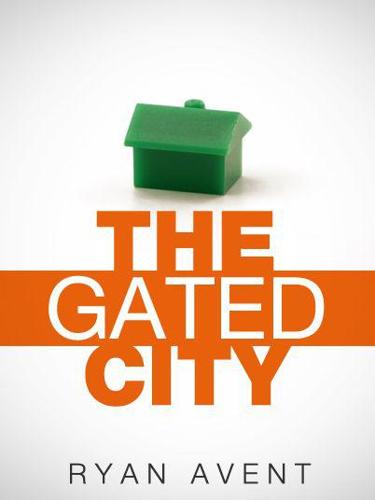
The Gated City (Kindle Single)
by
Ryan Avent
Published 30 Aug 2011
People have a proprietary feeling about the neighborhood in which they live, particularly when they have large sums of money on the line thanks to their investment in their home. This feeling leaves urban property rights in a gray area. Residents are remarkably willing to dictate to private property owners what can and can't be done with their land. They're willing to approve restrictive zoning rules and lobby against permitting in ways that dramatically reduce potential land value, without ever dreaming of compensating owners and would-be developers. Homeowners have long been abetted in this attitude by people of all ideological stripes – the progressive Great Society slum-clearers, the conservative suburb builders, and the New Urbanist suburban critics all accept the importance of tight government controls over land usage: over who can do what, where, in what kind of structure, with what color shutters.
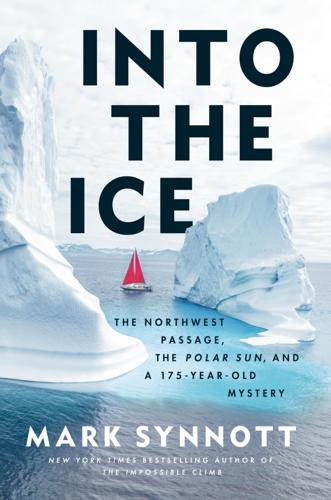
Into the Ice: The Northwest Passage, the Polar Sun, and a 175-Year-Old Mystery
by
Mark Synnott
Published 14 Apr 2025
See also aerial imagery and reconnaissance Ducharme, Steve, 296 Dyke, Arthur, 334 E MV Earl Camden, 32 Egede, Hans, 67 Elfin Cove, Alaska, 348–49 Endangered Species Act, 86 HMS Enterprise, 136, 276 HMS Erebus: abandonment of, 223–4, 264, 275; archaeological work on, 238, 244, 246, 248, 262–63, 264, 271–72; and Bayne’s map, 193–94; and Bellot Strait, 154; burial of lost expedition members, 192; command and crew of, 106–8; construction and early missions, 95–96; and deaths of expedition members, 140; discovery of wreck, 289–90, 295; and DNA evidence, 203; and evidence on King William Island, 195; and expedition evidence at Beechey Island, 142; formal ball on, 102; and Fox expedition, 44, 71; and Franklin expedition’s route, 110; funding to locate, 277, 286; and Gross’s search for Franklin’s tomb, 56; and historical context of Arctic exploration, xxxiii; ice bound in Baffin Bay, 137; Inuit knowledge of, 257–58, 332, 362n49; and Inuit religious beliefs, 262–64; and pack ice encounters, 122; and “patent fuel,” 145–46; and Peel Sound crossing, 149; and Polar Sun’s route, 208, 233; research sources on, 352, 356; restricted zone around wreck of, 256–57; retractable propeller, 137, 295; and scurvy, 96–97, 186; and shipboard routines, 104; speculation on route choices, 166–68; and treatment of ships’ names, 358; and Victory Point Record, 183–84; at Whale Fish Islands, 89, 93; and Woodman’s research on Franklin expedition, 45–46, 49–50 Erebus Bay, 199–200, 202–3, 250, 259, 271–72 Erebus: The Story of a Ship (Palin), 352 Erik the Red, 64 eskers, 179, 183, 195 Eskimo Diary (Frederiksen), 78 Evans, Thomas G., 107 Eystribygð, Greenland, 65 F Felix Harbour, 155, 159, 161, 163–65 Finland, xxix, 81 Finnegan, William, 346 Fisher, Joseph, 336 Fitzjames, James: abandonment of ships, 264; background, 99–100; ice bound in Baffin Bay, 137; and officer selection for Franklin expedition, 104; and photograph of expedition officers, 105; and planning for Franklin expedition, 45; plans for Asia journey, 99; remains identified, 288; and shipboard routines, 97–99; and speculation about the Boat Place, 202–3, 259–60; and Victory Point Record, 183–84; at Whale Fish Islands, 93; and Woodman’s research on Franklin expedition, 259.
…
Roch, 150 Supunger, 49–50, 188, 193, 250, 265–66 Surian, Tom, 284–85, 301–2 Sutherland, Peter, 140 Swilly, Lough, 94 T Taichman, Russell, 356 Taloyoak, Canada, 53 Tasiujaq Sound, 123, 126, 128–30 SV Taya, 206–7, 210, 212–13, 215, 222–23, 225, 233–35, 247, 341 tepui, 21, 76, 77 Teroahauté, Michel, 40 HMS Terror: abandonment of, 223–4, 275; archaeological work on, 244, 246, 250, 262–63, 264–65, 271–72; and Bayne’s map, 193–94; and Bellot Strait, 154; burial of lost expedition members, 192; command and crew of, 101–3, 105–8; construction and early missions, 93–96; discovery of wreck, 285–86, 289–90, 291–96; and DNA evidence, 203; and evidence on Beechey Island, 142; and evidence on King William Island, 195; formal ball on, 102; and Fox expedition, 71; and Franklin expedition’s route, 110; and Gross’s search for Franklin’s tomb, 56; and historical context of Arctic exploration, xxxiii; ice bound in Baffin Bay, 137; Inuit knowledge of, 254, 256–58; location of wreck, 254, 267, 374n; and origins of Franklin expedition, 44; and pack ice encounters, 122; and “patent fuel,” 145–46; and Peel Sound crossing, 149; and Polar Sun’s route, 208, 233; retractable propeller, 137, 295; and scurvy, 96–97, 186; speculation on final route choices, 166–68; uniforms of crew members, 274; and Victory Point Record, 183, 184; at Whale Fish Islands, 89; and Woodman’s research on Franklin expedition, 45–47, 49–50, 257–59 The Terror (AMC miniseries), 203, 356 Terror Bay: and discovery of Terror wreck, 290–96; and Fitzjames Island monument, 266; and Franklin expedition casualty sites, 271–72; and Gross’s search for Franklin’s tomb, 55–56; and Inuit encounters with Franklin expedition, 47, 245, 257–58; location of Terror wreck, 254; and Polar Sun’s route, 240; and Rae expedition, 277; restricted zone around wreck site, 256–57; and search for Franklin’s tomb, 248, 256; and speculation about the Boat Place, 259–61; and theories of wreck locations, 264; and Woodman’s research on Franklin expedition, 50 Tetqataq, 272, 278–79, 332, 372n Tetteroo, Fabiënne, 203, 356 Thomas, Chimham, 157, 163 Thoreson, David (“DT”), 308–9, 314, 318–19, 321–22, 326–27, 330, 338–43, 348 Thule people, 65–67, 83–84, 182 Tiriksiu, 158 Todd Islets, 276 Too-loo-ark, 251–52 Tooshooarthariu, 372n Torrington, John, 138–41 Traill, Henry Duff, 31 Transport Canada, 249–50 HMS Trent, 34–35 Trowbridge, Rolland, 342 Trump, Donald, 331 tuberculosis, 42, 140–41 tuks (small ice chunks), 225, 232–33, 235 Tuktoyaktuk, Canada, xxxii, 240, 302–3, 308, 317–18, 321–43 Tulluahiu, 155–56, 163 Typhoon Merbok, 328–29, 336–41, 346 U Ukuararsuuk, 272, 279, 332 umiaks, 84, 159 Unravelling the Franklin Mystery (Woodman), 45–46, 48, 54 U.S.
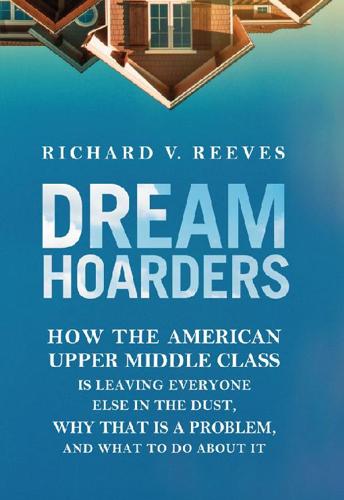
Dream Hoarders: How the American Upper Middle Class Is Leaving Everyone Else in the Dust, Why That Is a Problem, and What to Do About It
by
Richard V. Reeves
Published 22 May 2017
But for many parents, it is also about helping their children accumulate human capital by securing access to local schools. Unsurprisingly, homes near good elementary schools are more expensive: about two and a half times as much as those near the poorer-performing schools, according to an analysis by Jonathan Rothwell. But the gap is much wider in metropolitan areas with more restrictive zoning. “A change in permitted zoning from the most restrictive to the least would close 50% of the observed gap between the most unequal metropolitan area and the least, in terms of neighborhood inequality,” Rothwell finds.16 Loosening zoning regulations would reduce the housing cost gap and by extension narrow educational inequalities.

The Passenger
by
AA.VV.
Published 23 May 2022
* The population of California has nearly doubled since 1980, its current stagnation notwithstanding. However, the building of new homes and apartment units has not grown at the same pace. Neither money nor space are lacking for their construction but rather the political will to do so. Over the years cities have approved increasingly restrictive zoning regulations, with the stated goal being to protect the historic identity of their communities (see “A Home of One’s Own” on page 15). In reality, the goal is to safeguard the interests of existing homeowners who do not relish the idea of construction sites right outside their front doors and who fear, even more, that the building of new homes in their neighbourhoods might lower the value of the existing properties and bring in new neighbours from different ethnic groups and social classes.

The Making of Prince of Persia: Journals 1985-1993
by
Jordan Mechner
Published 30 Jan 2012
The power was still out in places, and a lot of streets were closed off, but by and large it looked like people were going about their lives as usual. The extent of the damage in my building: no hot water, no elevator, no lights in the lobby or stairwell, and the fire escape is sealed off as a “Restricted Zone.” November 20, 1989 NYU film school application arrived. I’ve started to fill it out. How terrifying. Robert is in town. We drove to Berkeley for dinner. (Crossed the Bay Bridge for the first time since the quake.) He’s euphoric at having escaped the industrial park and started a new life at Yale.

Beyond the Wall: East Germany, 1949-1990
by
Katja Hoyer
Published 5 Apr 2023
Born in September 1961, a few weeks after construction of the Wall began, he grew up 250 kilometres east of it in Abbenrode, a small border community in the Harz mountain range. His family had roots there that stretched all the way into the nineteenth century, which meant that even the immediate proximity of the West never held any serious allure for him. But living so close to the inner-German border still shaped every aspect of his life. Residents of this ‘restricted zone’ had to carry their papers with a special stamp identifying them as legitimate residents wherever they went. A football pitch and a public swimming pool ended up within 500 metres of the border, rendering them unusable to the residents, much to the dismay of the local children. The pitch was simply moved when a new fencing system was built diagonally across the old one, but the swimming pool fell out of use altogether.
…
Like Andreas, he ‘prayed every day that nobody wanted to make an escape attempt during my shift. We had all been ordered to shoot in the legs. If you didn’t do it, you would be in trouble.’31 During that time, Manni fell in love with Ingrid, a local girl. He was devastated to learn that he would not be allowed to enter freely the ‘restricted zone’ she lived in following his military service. So he decided to marry Ingrid in 1967 and move to her area permanently. Needing a job, he began to work at the Klettenberg barracks again, but this time in a civilian role. When the government decided to beef up systems all along the rural border, it fell to people like him to help bulldoze the old border and install the next generation of concrete reinforcements, barbed wire and 3-metre-high fencing.
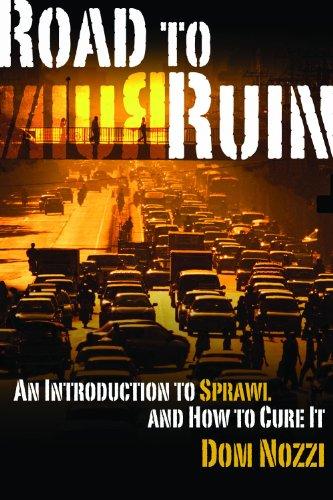
Road to ruin: an introduction to sprawl and how to cure it
by
Dom Nozzi
Published 15 Dec 2003
Reasons Why Bicycling and Walking Are and Are Not Being Used More Extensively as Travel Modes. National Bicycling and Walking Study, Case Study No. 1. Washington, D.C.: U.S. Department of Transportation, 1992. ———. Statistical Abstract of the U.S., 2001. Washington, D.C.: Federal Highway Administration, U.S. Department of Transportation, 2001. ———. Traffic Calming, Auto-Restricted Zones, and Other Traffic Management Techniques: Their Effects on Bicycling and Pedestrians. National Bicycling and Walking Study, Case Study No. 19. Washington, D.C.: U.S. Department of Transportation, 1994.———. Traffic Safety Facts 2000. http://www-nrd.nhtsa.dot.gov/pdf/ nrd-30/NCSA/TSF2000.pdf.
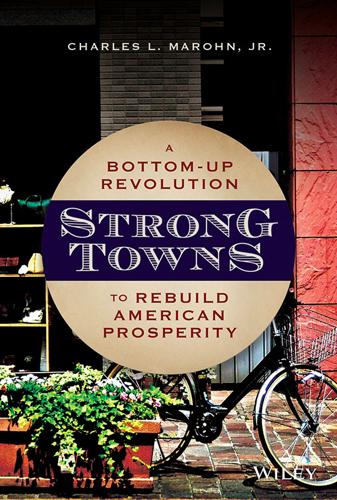
Strong Towns: A Bottom-Up Revolution to Rebuild American Prosperity
by
Charles L. Marohn, Jr.
Published 24 Sep 2019
That means the only developers who can pay the price and build are ones with the capacity to work through years of regulatory process, despite the uncertainty, or the ones who have special insider knowledge, or those who have both. In any case, the resulting projects are going to be large. And seemingly randomly located. This reality has the pernicious side effect of stagnating otherwise perfectly fine neighborhoods. Some are “protected” from development with restrictive zoning, regulations that try and keep the neighborhood in an artificial stasis. This can create a temporary state of prosperity, especially when the neighborhood is disproportionately affluent. As soon as the affluence, and corresponding political influence, begin to wane, the neighborhood becomes the target of random intensity leaps by savvy and connected developers.
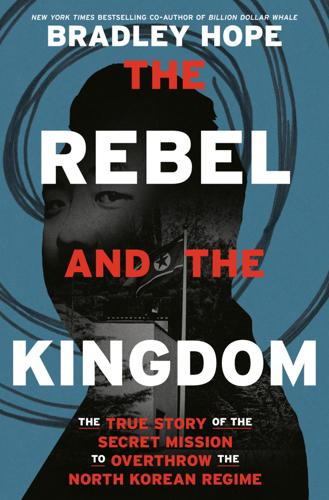
The Rebel and the Kingdom: The True Story of the Secret Mission to Overthrow the North Korean Regime
by
Bradley Hope
Published 1 Nov 2022
“I was overwhelmed with relief and thankfulness,” he said. For the next year and nine months, Ahn lived under full house arrest. He couldn’t even help his wife bring groceries from the car. The situation was hard on his family. Finally, in 2021, Judge Rosenbluth modified his bail so that he could travel in a restricted zone from 8:00 a.m. to 8:00 p.m., which allowed Ahn to care for his mother—who has a disease called trigeminal neuralgia that causes extreme pain in the face—and his ninety-nine-year-old grandmother, who lived together in their home nearby. However, as of May 2022, more than three years after the operation in Madrid, Ahn’s life was still being upended without any end in sight.

German Language Learning: This Book Includes: Learn German for Beginners, Phrase Book, Short Stories. Perfect for Travel! Get Fluent and Increase Your German Easily in Your Car or Anywhere You Want!
by
Language Building Lab
Published 4 Jan 2021
Minimale Geschwindigkeitsbegrenzung pro Strecke - Minimum speed limit by lane 88. Höchstgeschwindigkeit zulässig - Allowed maximum speed limit 89. Kreisverkehr - Roundabout 90. Vorfahrt bei der nächsten Kreuzung - Right of way at the next crossing 91. Kein Parken - No Parking 92. Parkbeschränkungszone - Parking restriction zone 93. Park & Ride - Park and ride 94. Parkgefahr - Parking hazard 95. Kein Überholen - No Overtaking 96. Kein Eintrag - No Entry 97. Keine Kraftfahrzeuge - No motor vehicles 98. Keine Fahrzeuge - No vehicles 99. Prioritätsstraße - Priority road 100. Kein Warten - No waiting 101. Fahren Sie geradeaus oder biegen Sie rechts ab - Drive straight ahead or turn right 102.
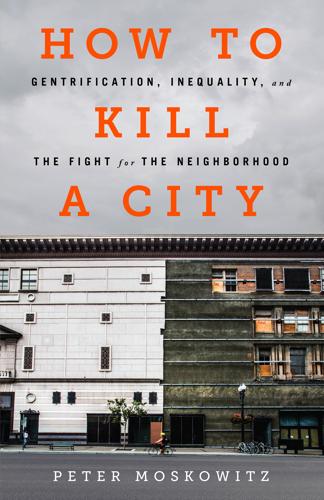
How to Kill a City: The Real Story of Gentrification
by
Peter Moskowitz
Published 7 Mar 2017
Cities in the United States are several times less dense than their European and Asian counterparts. (New York is an exception, but its density is very uneven from neighborhood to neighborhood.) The flocks of people moving to New York undoubtedly would rather live in Manhattan than East New York, yet because the city protects much of Manhattan’s residential areas with restrictive zoning but allows upzoning in poorer areas, gentrifiers are funneled into areas that are least capable of dealing with waves of new residents. The same is true in San Francisco, where new condos are flooding the Mission and other affordable neighborhoods and the city government is allowing new, giant office buildings to be built in previously affordable neighborhoods.
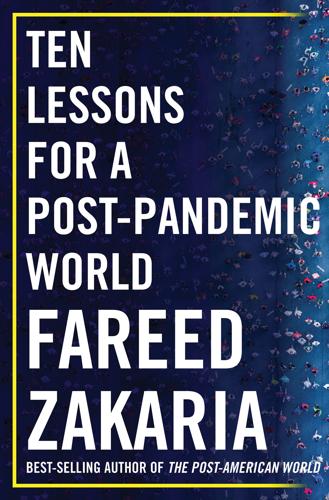
Ten Lessons for a Post-Pandemic World
by
Fareed Zakaria
Published 5 Oct 2020
“This really goes against a hundred years of urban planning orthodoxy, the idea being that you want to separate the functions of the city,” says Samuel Kling, an expert on cities at the Chicago Council on Global Affairs. The prevailing idea has long been to differentiate between the residential, commercial, entertainment, and industrial areas of a city. Nowhere have these principles been implemented more aggressively than in America. Restrictive zoning has distorted development by forbidding density, cramping construction, and pushing housing costs through the roof. Influential homeowners’ associations block all change they see as infringing on their turf or threatening to attract “the wrong people” to their neighborhood—often code for minorities.

Southeast Asia on a Shoestring Travel Guide
by
Lonely Planet
Published 30 May 2012
It’s expected to continue erupting for some time to come (the Thorn Tree forum on lonelyplanet.com has frequent updates on the current status of the volcano). At times the eruptions have been so fierce that a 2km or 3km restriction zone has been implemented around the volcano, which has made the view point, and the village of Cemero Lawang, out of bounds. At the time of research the restriction zone was down to 500m and sunrise tours were again operating. * * * Sleeping & Eating CEMORO LAWANG At the lip of the Tengger crater and right at the start of the walk to Bromo, Cemoro Lawang is the most popular place to stay and has plenty of cheap accommodation, although the vast majority of it is overpriced.
…
* * * Taxi The major cab companies are City Cab ( 6552 1111) and Comfort ( 6552 1111) and SMRT ( 6555 8888). Fares start from S$2.80 to S$3.20 for the first kilometre, then 20c for each additional 385m. There are a raft of surcharges, ie late-night services (50%), peak-hour charges (30%), restricted-zone charges, airport pick-ups and bookings. All taxis are metered. Extra charges are always shown on the meter except for that of going into a restricted zone during peak hours. You can flag down a taxi any time or use a taxi rank outside hotels and malls. Trishaw Bicycle trishaws congregate at popular tourist places, such as Raffles Hotel and outside Chinatown Complex.

Practical Doomsday: A User's Guide to the End of the World
by
Michal Zalewski
Published 11 Jan 2022
By itself, this saying doesn’t mean much, but in countries or regions with robustly growing population—including much of the United States—a second home or a vacant parcel could make for an inflation-proof asset that’s likely to appreciate in the long haul. A cynical investor would also note that the supply of new housing is artificially limited by powerful forces at play, including increasingly restrictive zoning laws, suspect environmental policies, and onerous building codes pushed for by an unholy alliance of local bureaucrats and homeowners who want their quaint cul-de-sacs to be forever frozen in time. Another contributor to the housing misery are ineffectual government policies that try to make housing affordable by subsidizing loans without sufficiently expanding the supply of new homes.* The questionable morality of exploiting these trends aside, the practical problem is that because of the high price of real estate, even fairly affluent buyers can’t afford to diversify, limiting most aspiring real estate moguls to a single investment parcel.

Green Gold
by
Sarah Allaback
Published 14 Mar 2025
Rideout was suffering greatly from the slow descent of his Lyon. To add insult to injury, in an article for the Los Angeles Times, Ernest Braunton cited Hertrich’s recommendation that only Fuerte and Puebla varieties should be planted. Braunton characterized the Lyon as “generally considered a poor tree,” successful only in “restricted zones or favorable local spots.”28 The CAA agreed and even added other criticisms about its size and dependability. His patience worn thin, Rideout vented his anger in a professionally printed brochure featuring his wife picking a Lyon on the cover and his own sketch of a lion as a concluding illustration.

Realizing Tomorrow: The Path to Private Spaceflight
by
Chris Dubbs
,
Emeline Paat-dahlstrom
and
Charles D. Walker
Published 1 Jun 2011
A large sign for the Russian Space Agency (Rosviacosmos) division for general construction in Baikonur- called KBOM-was read by the Americans as "kaboom." When the crew ascended the elevator to the top of the rocket, guests adjourned to the launch viewing site, a few covered structures less than a kilometer away. These were surprisingly close to the action, compared to the Kennedy Space Center's seven-mile restricted zone for visitors viewing shuttle launches. There was no visible security apart from the chest-high metal fences that reminded people not to cross the no-man's-land between them and the rocket. Unlike shuttle launches, which have specific countdowns broadcast for the visitors, Soyuz launches have none.

Insight Guides Iceland
by
Insight Guides
Published 6 Dec 2024
Shutterstock Tip As evidenced by the volcanic eruptions at Eyjafjallajökull and Grímsvötn, Iceland’s landscape is prone to the occasional lively outburst. The Department of Civil Protection and Emergency Management (www.almannavarnir.is) issues the latest status reports on volcanic activity, evacuation procedure, restricted zones and road closures. Despite the difficulties, Þórsmörk attracts thousands of campers every summer weekend: there are no hotels or guesthouses here, but there are three mountain huts and a clutch of summerhouses – see www.volcanohuts.com for details. Visitors are rewarded with spectacular glacier views, fields of wildflowers, pure glacial streams and forests of birch and willow full of birds – particularly blackbirds, ravens and wagtails.

The Radical Fund: How a Band of Visionaries and a Million Dollars Upended America
by
John Fabian Witt
Published 14 Oct 2025
In Black papers like the Chicago Defender, he read about the fearsome destruction of the flourishing Black community of Tulsa, Oklahoma, in 1921, where white rioters had killed at least 150 people and destroyed more than 1,200 Black-owned homes.42 Now the white crowd had gathered for Sweet himself. Ever since 1917, when the Supreme Court had struck down racially restrictive zoning ordinances like the one Baldwin fought in St. Louis, white residents had sought new ways to keep Black people from living in their midst. Black migrants, however, kept coming. In 1925, more than half the total Black population in the North consisted of people born in the South, amounting to around a million new arrivals.
…
Muste weighed in to help with “educational activities” and to build a “ground work of economic knowledge” for Black workers.52 In a race to stay ahead of the other committees, White hastily gathered together budgets from the previous NAACP legal fights in the Arkansas peonage case and the Sweet case in Detroit. He rehearsed earlier litigations like the successful challenge to racially restrictive zoning in Louisville and the organization’s winning case against whites-only Texas primary elections in the 1927 Supreme Court decision Nixon v. Herndon. In the revised proposal, the committee earmarked resources for school funding equalization suits, voting rights cases, railroad desegregation cases, jury service cases, and residential segregation cases.

A History of British Motorways
by
G. Charlesworth
Published 1 Jan 1984
Politically the system was not acceptable in Britain where reliance has been placed, in effect, on parking control as a means oflimiting traffic in busy urban areas. A road-pricing scheme has been introduced in Singapore 7 where drivers must obtain a special supplementary licence which has to be displayed on cars driven into a restricted zone during the morning commuting hours. Plans for the redevelopment of urban areas after World War 11 included road proposals within the general plans and some guidance on road requirements in those areas was included in departmental reports issued soon after the war S,9. Criticism was made of some of the plans as being utopian and unpractical; e.g.
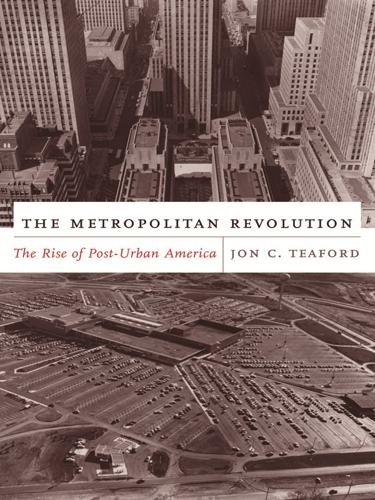
The Metropolitan Revolution: The Rise of Post-Urban America
by
Jon C. Teaford
Published 1 Jan 2006
Numerous residents and neighborhood associations protested this zoning exception, which might open the door to multiple-family dwellings, and the developer withdrew the proposal.85 The same year, a group of homeowners petitioned the village’s governing board to find “some means … to protect our section against the creation of low-cost homes.”86 Stirred to action by this potential threat to the Scarsdale way of life, the board embarked on the drafting of a new and more restrictive zoning code. FIGURE 1.5 Home in Scarsdale, New York, in the early 1940s. (Library of Congress) In this protected world apart, club life flourished. For devotees of patrician sports, the Scarsdale Golf Club and Fox Meadow Tennis Club offered exclusive links and courts. The Woman’s Club served female Scarsdale.
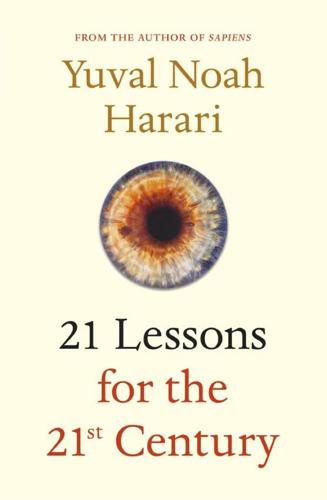
21 Lessons for the 21st Century
by
Yuval Noah Harari
Published 29 Aug 2018
The publisher of a third ultra-Orthodox newspaper, Hamodia, defended this policy by explaining that ‘We are backed by thousands of years of Jewish tradition.’5 Nowhere is the ban on seeing women stricter than in the synagogue. In Orthodox synagogues women are carefully segregated from the men, and must confine themselves to a restricted zone where they are hidden behind a curtain, so that no men will accidentally see the shape of a woman as he says his prayers or reads scriptures. Yet if all this is backed by thousands of years of Jewish tradition and immutable divine laws, how to explain the fact that when archaeologists excavated ancient synagogues in Israel from the time of the Mishnah and Talmud, they found no sign of gender segregation, and instead uncovered beautiful floor mosaics and wall paintings depicting women, some of them rather scantily dressed?

Bringing Columbia Home: The Untold Story of a Lost Space Shuttle and Her Crew
by
Michael Leinbach
and
Jonathan H. Ward
Published 23 Jan 2018
We established a three-mile “box” in the waters off KSC—an exclusion zone to keep aircraft and boats out of the launch path in case of an explosion early in a rocket’s flight. But now we also had to consider the very real possibility that the shuttle could be attacked. If a plane or boat strayed into the restricted zone around KSC and the vehicle flight path during a countdown, we faced tough decisions. Was it a tourist who just wanted to take some photos up close? Was it a charter fishing boat that strayed off course and forgot to turn on its radio? Or was it someone trying to look innocent, only to then make a sudden hostile move?

Reentry: SpaceX, Elon Musk, and the Reusable Rockets That Launched a Second Space Age
by
Eric Berger
Published 23 Sep 2024
The range safety officer establishes such no-go zones for boats, so they won’t get hit by falling debris if a rocket breaks apart during ascent. In the launch control center, the engineers tried to keep the mood light. Someone back at the company’s headquarters photoshopped a picture of Richard Shelby on a jet ski in the restricted zone. Shelby was a powerful Republican senator from Alabama who represented the interests of United Launch Alliance, which had a large manufacturing facility in his state. The photo was passed around the control room. Soon enough, SpaceX got word that help was on the way. The new Air Force commander, Wilson, had dispatched a Black Hawk helicopter to intimidate the boat with a blast from its propeller blades.
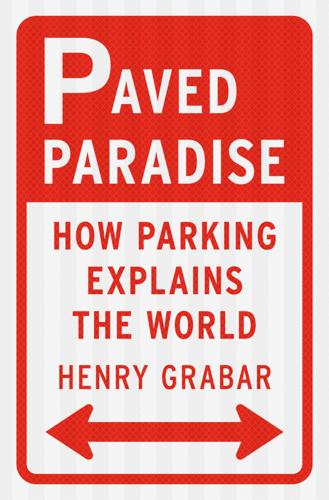
Paved Paradise: How Parking Explains the World
by
Henry Grabar
Published 8 May 2023
Based on the rate a wig seller paid a store owner to operate on the sidewalk in front of his shop in 1977, at the city’s economic nadir, William H. Whyte concluded that a Midtown parking space ought to go for as much as $20,000 a month. Instead they went for nickels on the hour. One of the first entrepreneurs to seize the opportunity was the ice cream man. In part, the ice cream truck’s raison d’être was derived from restrictive zoning: neighborhoods of homes, parks, and playgrounds were often not that close to a place you could buy ice cream. Whether the truck showed up to a suburban jungle gym or a cluster of housing projects, it was always a welcome sight. But with New York City’s high commercial rents, ice cream truck drivers were also taking advantage of mobile food vendor permits that went for just $100 a year.[*] Ice cream truck appearances are circumscribed by unwritten curb-control maps established by custom, negotiated by handshake, and enforced with violence.

Happy City: Transforming Our Lives Through Urban Design
by
Charles Montgomery
Published 12 Nov 2013
Whether or not you share Lakeman’s conception of the evils of the urban grid, he does identify that great irony of the American city: a nation that celebrates freedom and weaves liberty into its national myth rarely gives regular people the chance to shape their own communities. Municipal governments, often with the counsel and assistance of land developers, lay down community plans complete with restrictive zoning long before residents arrive on the scene. Residents have no say about what their streets and parks and gathering places will look like. And once they move in, it is illegal for them to tinker with the shape of the public places they share, or, as I have illustrated, to use their homes for anything beyond the dictates of strict zoning bylaws.
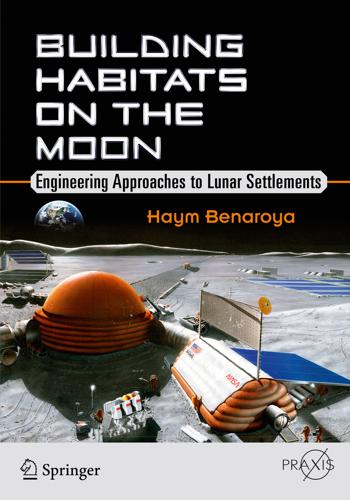
Building Habitats on the Moon: Engineering Approaches to Lunar Settlements
by
Haym Benaroya
Published 12 Jan 2018
Studies were cited that summarized the types of optical degradation that can be expected on mirrors. Additionally, a number of dust mitigation approaches have been suggested by Johnson et al.:1. shielding and baffles to protect mirrors and sensitive equipment from dust, meteoroid impacts and stray light 2.restricted zones for operations, and stabilized zones, as well as berms, to help intercept ejected dust 3.periodic cleaning and restoring of mirrors, and use of segmented mirrors to allow for replacement of individual damaged segments 4.development of dust mitigation technologies, especially after a presence is established on the Moon and tests are possible locally, and 5.dustlocks to capture and dispose of dust before it is carried to sensitive areas.
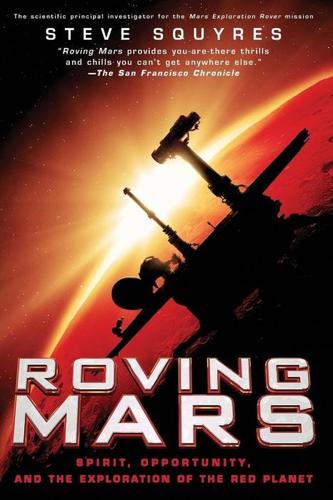
Roving Mars: Spirit, Opportunity, and the Exploration of the Red Planet
by
Steven Squyres
Published 2 Aug 2005
The wind direction was okay, but now there was too much wind shear right above the pad. Wind shear is an abrupt change in wind speed with height, and it’s the kind of thing that can tip a rocket sideways while it’s still moving slowly. The other problem was that some knucklehead in a fishing boat had wandered into the restricted zone downrange from the pad, and there wasn’t enough time for the Coast Guard to chase him out. So we were done for the night. The party guests straggled out of the park, hot, wet and grumpy. The next morning we learned to our shock and surprise that it had been a good thing that we had scrubbed.
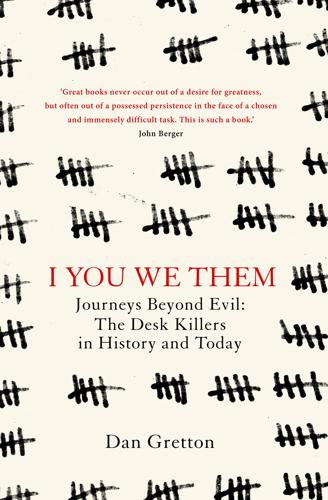
I You We Them
by
Dan Gretton
As if in response we started to sing our entire repertoire of English and Welsh hymns – ‘Christ our Lord is Risen Today’, ‘Bread of Heaven’, ‘Jerusalem’ – getting louder and louder the further we got into the country. Soon we came upon the ‘restricted zone’ we’d seen on the map. ‘Gasterfelder Holz’, and intrigued by the ‘VORSICHT!’ signs, ‘ZONE MILITAIRE’, ‘Reichminister’ this, ‘Verboten’ that. We skirted the wood and the barbed wire. The site went on and on … a fast forty minutes’ walking and we were still adjacent to it. I was walking at a real pace now, exhilarated by the quality of the track, and the anticipation of the wild country in front of us today. We followed the wood and the restricted zone round to the right, and then we saw, through the trees, a whole series of what looked exactly like missile silos – five, six, maybe eight in all.
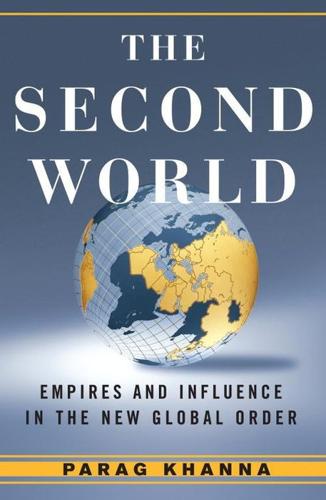
Second World: Empires and Influence in the New Global Order
by
Parag Khanna
Published 4 Mar 2008
Three-quarters of Russia’s economy is centered on Moscow, one of the most expensive cities in the world, with more billionaires than New York. Its Putin-appointed mayor has resurrected the city by way of hulking, obtuse sculptures, a hideous regression from St. Petersburg’s baroque palaces. Drivers stuck in traffic might contemplate these eyesores, but the rich buy sirens to blaze through restricted zones at high speeds. Fancy shopping malls charge entrance fees; ordinary people need not apply. In Russian capitalism, the credo “Russia is a free country!” has its corollary: “Because you paid more, you earned it.” The greatest remaining statue of Lenin stands before the Finland Station in St. Petersburg, commemorating his arrival there in 1917 to launch the October Revolution.

Good Economics for Hard Times: Better Answers to Our Biggest Problems
by
Abhijit V. Banerjee
and
Esther Duflo
Published 12 Nov 2019
As in the developing world, this presents the new migrant with a rather dire set of choices: live far away from work or pay through the nose.80 Recent growth in the United States has been concentrated in locations with strong educational institutions. These places also tend to be the older cities with expensive and hard-to-expand stocks of real estate. Many are also more “European” cities, which tend to have stronger incentives to preserve their historical endowment against the forces of development, and hence have restrictive zoning regulations and high rents. This might be one reason why the average American is not moving to where the growth is happening. If a worker loses his job because his region is hit by an economic downturn, and he contemplates moving to get a job elsewhere, the real estate question gets even more complicated.

Kissinger: A Biography
by
Walter Isaacson
Published 26 Sep 2005
Israel’s Yariv suggested that his country’s troops would leave the western side of the canal and pull back up to twelve kilometers if Egypt would agree to create a semi-demilitarized zone for thirty kilometers on both sides of the canal. Egypt’s Gamasy countered with a plan that would make the Israelis pull back farther, reduce the size of the restricted zone, put a U.N. buffer between them, and set up a timetable for future Israeli withdrawals from the Sinai. Although still far from an agreement, the two generals were marching toward the type of disengagement accord that Kissinger hoped to negotiate himself. Rather than cheering them on, however, he began maneuvering to make them stop.
…
There would be a U.N. buffer zone of about ten kilometers, and there would be limits on the numbers of troops, tanks, and missiles in the area extending about forty kilometers behind each line. Other provisions included an end to belligerency and the reopening of the Suez Canal. Sadat would never accept this outright because, among other reasons, the forty-kilometer restricted zone would extend well into the main (non-Sinai) part of Egypt. But it was a good basis for discussion. As Sadat realized (far better than his generals or the Israeli cabinet), the details were pretty much beside the point. If the agreement led to a continued peace process, the locations of the lines at this first stage would soon be minor footnotes; if not, then the ensuing hostilities would make the proposed map moot.
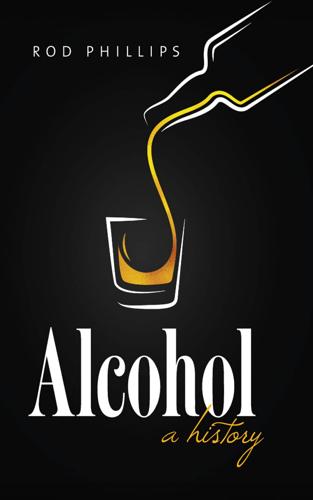
Alcohol: A History
by
Rod Phillips
Published 14 Oct 2014
British colonies felt the same impact, as supplies of German spirits disappeared, and throughout Africa many colonial administrations found ways to raise revenues—generally from taxes imposed directly on Africans—to replace the duties on alcohol.23 During and immediately after the war, various ordinances to restrict alcohol were put in place in some colonies, as they were in Europe itself. In 1917, Nigeria was divided into “prohibition” zones, where the indigenous population was forbidden to drink imported alcohol; “licensed” zones, where alcohol could be sold only by licensed retailers; and “restricted” zones, where Africans could sell imported alcohol if they had a license. But in 1919, British colonial governments were instructed to prohibit the importation of any distilled spirits that were destined for sale to the indigenous population.24 After the First World War, an international commission was set up to consider revising the terms of the conferences of the 1880s that had divided Africa among the European powers and set controls on the importation of alcohol.

The Pentagon's Brain: An Uncensored History of DARPA, America's Top-Secret Military Research Agency
by
Annie Jacobsen
Published 14 Sep 2015
The firing party would have to wait it out. Eventually the deadly radiation levels would subside, they were told. Eighty miles to the east another calamity was unfolding. A Japanese fishing trawler, called the Lucky Dragon Number Five, had been caught unawares roughly fifteen miles outside the designated U.S. military restricted zone. After the Castle Bravo bomb exploded, many of the Japanese fishermen on the trawler ran out on deck to behold what appeared to be some kind of mystical apparition, the sun rising in the west. Awestruck, they stood staring at the nuclear fireball as it grew, until a chalky material started falling from the sky.
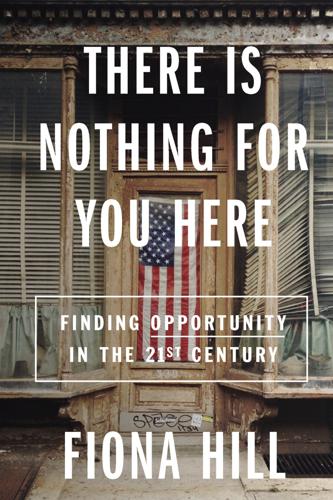
There Is Nothing for You Here: Finding Opportunity in the Twenty-First Century
by
Fiona Hill
Published 4 Oct 2021
Generational wealth had a major impact on children’s prospects, as was the case for me back in the United Kingdom. But in the United States, the average Black family had ten times less accumulated wealth than the average white family. And they were far less likely to own a home. This was often due to the legacy and persistence of restrictive zoning laws, tax code biases, and mortgage lending prohibitions dating from before the 1960s and the Civil Rights Act. Within and across generations, inequality, poverty, and discrimination shape an individual’s prospects for wealth and prosperity—and health and well-being. While the United States has the largest health-care spending of any country, life expectancy has fallen for lower-income Americans in the past two decades.
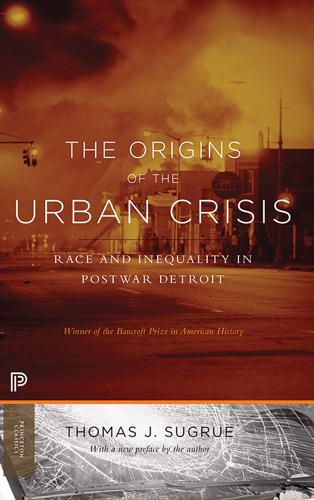
The Origins of the Urban Crisis
by
Sugrue, Thomas J.
And in the postwar period, white Philadelphians and Cincinnatians attacked blacks who moved into previously all-white enclaves, and resisted efforts to integrate the housing market.84 Countless whites retreated to suburbs or neighborhoods on the periphery of cities where they prevented black movement into their communities with federally sanctioned redlining practices, real estate steering, and restrictive zoning laws.85 Racial violence had far-reaching effects in the city. It hardened definitions of white and black identities, objectifying them by plotting them on the map of the city. The combination of neighborhood violence, real estate practices, covenants, and the operations of the housing market sharply circumscribed the housing opportunities available to Detroit’s African American population.
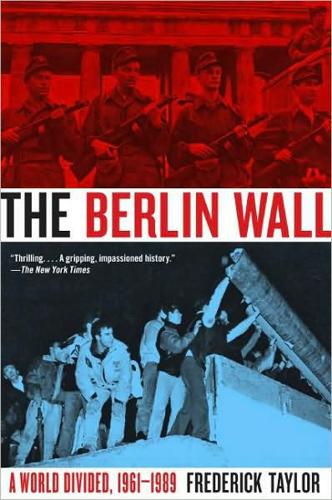
The Berlin Wall: A World Divided, 1961-1989
by
Frederick Taylor
Published 26 May 2008
‘The military engineering and technical extension of the border,’ Konev wrote to East German Defence Minister Heinz Hoffmann, ‘is to be undertaken in a direction calculated to deal with the main quarter from which border-violations can be expected’. Konev recommended that in the hundred-metre restricted zone on the eastern side of the border a ‘military regime’ should be instituted and ‘firearms used against traitors and those who violate the border’. He could be referring only to people who, like the tragic victims of 24 and 29 August, committed ‘border violations’ by trying to flee from East to West. 24 Despite the shootings, there was continuing concern about the effectiveness of the new border controls.

Slouching Towards Utopia: An Economic History of the Twentieth Century
by
J. Bradford Delong
Published 6 Apr 2020
It was not confident that it could resist the technology, military, and religious power of the Europeans. And so the country was closed: trade was restricted to a very small number of ships, and these were allowed access to the Port of Nagasaki only. Japanese subjects returning from abroad were executed; foreigners discovered outside of the restricted zone were executed; and Christianity was violently suppressed. For centuries formal empire struggled, and failed, to gain a foothold. Another factor differentiating Japan was that one in six Japanese were urban. As of 1868, Kyoto, Osaka, and Tokyo together had two million people. Half of adult men were literate: in 1868, there were more than six hundred bookshops in Tokyo.

Mauritius, Réunion & Seychelles Travel Guide
by
Lonely Planet
WORTH A TRIP BOAT EXCURSION 1: ÎLE AUX COCOS There are 17 small islands sprinkled around Rodrigues' lagoon and perhaps the most interesting of these is Île aux Cocos. Around 1.5km long, and 150m wide at its broadest point, Île aux Cocos is a nature reserve and the only island in the Indian Ocean on which four seabirds – the lesser noddy, brown noddy, fairy tern and sooty tern – all breed. The southern quarter of the island is fenced off as a restricted zone. Elsewhere, there is a virgin quality to the place – the lesser noddies and fairy terns are remarkably tame, just as all wildlife (including the ill-fated dodo) was when the first sailors arrived on Mauritius and Rodrigues. The reserve is overseen by Discovery Rodrigues – staff meet all boat arrivals and give a brief (and mostly French) overview of the island's more interesting features.

Colorado
by
Lonely Planet
Free bivouac permits are issued only to technical climbers and are mandatory for all overnight stays in the backcountry. To minimize the environmental impact of backcountry use, the Rocky Mountain National Park Backcountry Office (Click here) allows only a limited number of people to bivouac at four popular climbing areas. Phone reservations may be made March to May 20 for the following restricted zones: Longs Peak area, including Broadway below Diamond, Chasm View, Mills Glacier and Meeker Cirque; Black Lake area (Glacier Gorge), encompassing McHenry Peak, Arrowhead, Spearhead and Chiefshead/Pagoda; the base of Notchtop Peak; and the Skypond/Andrews Glacier Area, including the Taylor/Powell Peaks and Sharkstooth Peak.

Fodor's Costa Rica 2012
by
Fodor's
Published 6 Oct 2011
Some 34 blocks in the center city—sections of Avenidas Central and 4, and Calles 2, 3, and 17—now have bulevar (boulevard) status, with more on the drawing board. Thank the European Union for much of the funding. Weekday driving restrictions cover all of San José and parts of neighboring San Pedro. The last digit of your license plate dictates the day of the week when you may not bring a car into the large restricted zone from 6 am–7 pm. The city still hosts far too many cars, but the 20% reduction in vehicles each weekday rush hour has made a noticeable difference. Previous Chapter | Beginning of Chapter | Next Chapter | Table of Contents Previous Chapter | Next Chapter | Table of Contents Downtown | North and East of Downtown | West of Downtown The Irish group U-2 could have written its song “Where the Streets Have No Name” about San José.

Fodor's Costa Rica 2013
by
Fodor's Travel Publications Inc.
Published 1 Oct 2012
Some 34 blocks in the center city—sections of Avenidas Central and 4, and Calles 2, 3, and 17—now have bulevar (boulevard) status, with more on the drawing board. Thank the European Union for much of the funding. Weekday driving restrictions cover all of San José and parts of neighboring San Pedro. The last digit of your license plate dictates the day of the week when you may not bring a car into the large restricted zone from 6 am to 7 pm. The city still hosts far too many cars, but the 20% reduction in vehicles each weekday rush hour has made a noticeable difference. PLANNING WHEN TO GO High Season: Mid-December to April San José’s altitude keeps temperatures pleasant and springlike year-round. The capital’s status as a business-travel destination means lodging rates rarely vary throughout the year.
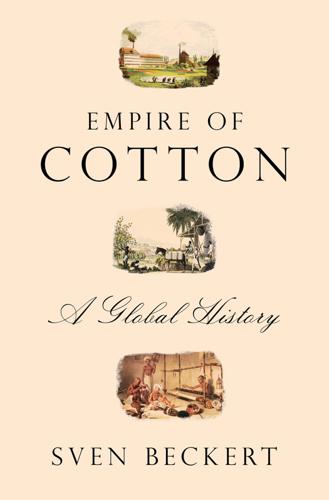
Empire of Cotton: A Global History
by
Sven Beckert
Published 2 Dec 2014
Historians of China have observed that while hand spinning diminished rapidly (by 1913 only 25 percent of all yarn used in China was spun at home), weaving remained, and during the 1930s 70 percent of cloth was still produced in homes, indeed well into the socialist period home manufacturing survived. In Latin America, the home-based production of cottons persisted as well, especially among indigenous communities. Historians of African manufacturing also observe that “contemporary statements as to the complete hegemony of import cottons have no validity outside fairly restricted zones”—basically places near European settlements. Even in India, as the British colonial Department of Commerce and Industry reported in 1906, “The weaving of cloth by hand is not, however, by any means extinct, after agriculture it is still the most important occupation of the native of India, and is pursued, in some parts, as an independent means of livelihood or in order to supplement the earnings derived from agriculture, and in others, as a purely domestic occupation.”31 As the world shifted under their feet, and without the power to respond politically to these shifts, local cotton producers adapted as well as they could.

Lonely Planet Washington, Oregon & the Pacific Northwest
by
Lonely Planet
First, the eruption happened on a Sunday, when the mountain’s logging parties were on weekend vacation. Second, it happened at 8:32am, 90 minutes before an army of homeowners was due to be let into the restricted ‘red zone’ to pick up their possessions (the area had been evacuated two weeks earlier in anticipation of an imminent eruption). In fact, only four people were inside the restricted zone at the time of the explosion: Harry Truman, the stubborn 83-year-old proprietor of the Spirit Lake Lodge; David Johnston, a US Geographical Survey volcanologist; and two further amateur volcanologists. All perished. The blast and subsequent landslide also claimed 7000 animals, 40,000 salmon, 47 bridges and over 185 miles of highway.
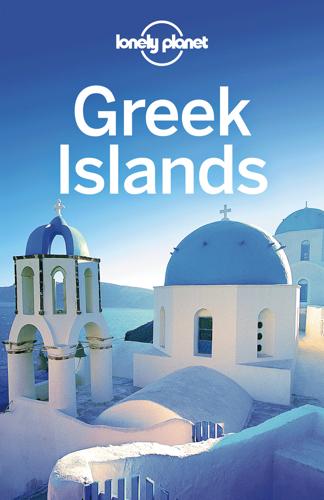
Lonely Planet Greek Islands
by
Lonely Planet
,
Alexis Averbuck
,
Michael S Clark
,
Des Hannigan
,
Victoria Kyriakopoulos
and
Korina Miller
Published 31 Mar 2012
National Marine Park of Alonnisos NATURE RESERVE In a country not noted for its ecological foresight, the National Marine Park of Alonnisos is a welcome innovation. Started in 1992, its prime aim has been the protection of the endangered Mediterranean monk seal ( Monachus monachus ) . The park is divided into two zones. The carefully restricted Zone A comprises a cluster of islets to the northeast, including Kyra Panagia. Zone B is home to Alonnisos and Peristera. In summer, licensed boats from Alonnisos and Skopelos conduct excursions through the park. Though it’s unlikely you’ll find the shy monk seal, your chances of spotting dolphins (striped, bottlenose and common) are fairly good.

The Rise and Fall of American Growth: The U.S. Standard of Living Since the Civil War (The Princeton Economic History of the Western World)
by
Robert J. Gordon
Published 12 Jan 2016
Patent laws have expanded too far by protecting software and business methods.15 Morris Kleiner has calculated that the percentage of jobs subject to occupational licensing has expanded from 10 percent in 1970 to 30 percent in 2008.16 Licensing reduces opportunities for employment, limits the ability of new entrants to create small businesses, and restricts upward mobility for lower-income individuals. By contributing to a reduction in the rate of entry of new firms, licensing is one of the sources of the decline in “business dynamism” noted in the literature cited in chapter 17. Edward Glaeser has called restrictive zoning and land use regulations a “regulatory tax” that transfers wealth from the less affluent to more affluent and promotes housing segregation by keeping poor people away from rich people and that, by inflating housing prices, encourages potential residents to move away from the most productive metropolitan areas to less productive areas, where housing is cheaper.17 All these instances of excessive regulation are relevant to inequality, for they redistribute income and wealth to those who are protected by their copyrights, patents, licenses, and land-use restrictions.

Lonely Planet Turkey (Travel Guide)
by
Lonely Planet
,
James Bainbridge
,
Brett Atkinson
,
Steve Fallon
,
Jessica Lee
,
Virginia Maxwell
,
Hugh McNaughtan
and
John Noble
Published 31 Jan 2017
Mt Ararat A highlight of any trip to eastern Turkey, the twin peaks of Mt Ararat (Ağrı Daği) have figured in legends since time began, most notably as the supposed resting place of Noah's Ark. The western peak, Büyük Ağrı (Great Ararat), is 5137m high, while Küçük Ağrı (Little Ararat) rises to 3925m. Climbing Great Ararat is a fantastic and challenging (if nontechnical) experience. Sadly for climbers, in 2016 Ararat was declared a military restricted zone and climbers were banned from the mountain. It was hoped the ban would be lifted for the 2017 climbing season. 1Climbing Mt Ararat All climbers must have a permit and must go with a guide licensed by the Turkish Mountaineering Federation, the Ağrı province Culture & Tourism Department or the Doğubayazıt district governorship.

Judas Unchained
by
Peter F. Hamilton
Published 1 Jan 2006
His e-butler’s news filter let through an alert telling him that wormholes were being detected in a lot of star systems across the Commonwealth. His instant response was to glance over at the giant terminal building with its long, curved glass roofs. Instinctive self-preservation kicked in, and he started to work out routes in his mind. As an employee, he had access to several restricted zones inside the station complex; there were a number of ways he could reach the platforms without ever having to join that horde outside. He let go of the brakes, and began peddling again. Today, there were eight guards outside the employee gate, all dressed in flexarmour and carrying weapons. Normally, there were just two security staff inside their cabin, who always waved him on when he showed his company pass.
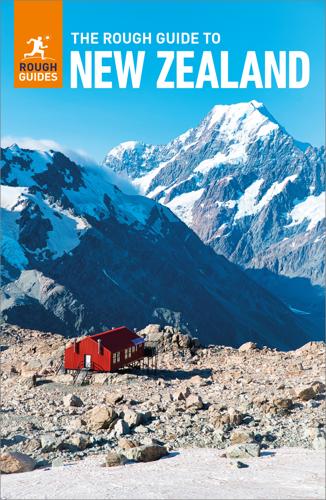
The Rough Guide to New Zealand: Travel Guide eBook
by
Rough Guides
Published 1 Jan 2024
All buses pass through the centre of town, stopping at different stands around The Octagon, or along Princes and George sts. By car Dunedin operates a one-way system running north–south through the city affecting Cumberland, Castle, Great King and Crawford sts. Parking Parking is seldom a problem, with inexpensive meters and restricted zones in the centre and free long-term street parking outside the downtown core. Car rental The international agencies are complemented by good home-grown companies, including Hirepool, 66 Cumberland St (www.hirepool.co.nz), and Ace at Dunedin Airport (www.acerentalcars.co.nz). By taxi Call Dunedin Taxis (03 477 7777).
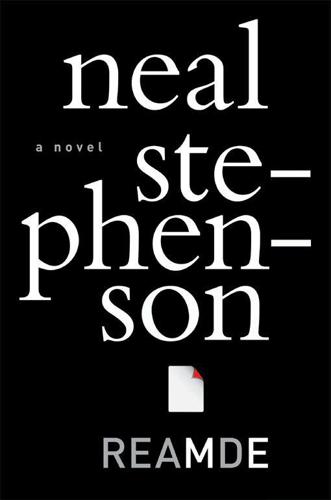
Reamde
by
Neal Stephenson
Published 19 Sep 2011
Only a couple of minutes later, they turned off Airport Way into the frontage road that led to the FBO. Considering the net worth of its clientele, one might have expected a glitzier place. But it was just a boxy two-story office building that faced the frontage road—a public thoroughfare—on one end and the restricted zone of the airport tarmac on the other. The airfield’s tall cyclone fence ran right up to one wall and then continued on the other side. As they pulled off the road, they entered a parking lot with only a few cars scattered about; at its opposite end this was terminated by the fence, or rather by a large rolling gate set into it.

Greece
by
Korina Miller
Published 1 Mar 2010
NATIONAL MARINE PARK OF ALONNISOS In a country not noted for ecological long-sightedness, the National Marine Park of Alonnisos is a welcome innovation. Started in 1992, its prime aim has been the protection of the endangered Mediterranean monk seal (Monachus monachus). boxed text. The park is divided into two zones. The carefully restricted Zone A comprises a cluster of islets to the northeast, including Kyra Panagia. Zone B is home to Alonnisos itself and Peristera. In summer, licensed boats from Alonnisos and Skopelos conduct excursions through the marine park. Though it’s unlikely you’ll find the shy monk seal, your chances of spotting dolphins (striped, bottlenose and common) are fairly good.

The Rough Guide to South America on a Budget (Travel Guide eBook)
by
Rough Guides
Published 1 Jan 2019
The reserve is divided into three parts: the Zona Cultural, encompassing the bus route and several villages within the cloudforest; the Zona Reservada, with the jungle lodges and oxbow lakes, located along Río Madre de Dios and Río Manu, accessible only as part of a guided tour with only a handful of licensed operators; and the Zona Restringida (Restricted Zone), consisting of pristine jungle, home to several uncontacted indigenous peoples, and completely off-limits to visitors. < Back to Peru Karol Kozlowski/AWL Images Montevideo Uruguay Montevideo Eclectic architecture, sweeping beaches and hip nightlife. Colonia del Sacramento Picturesque and historical town with excellent food.